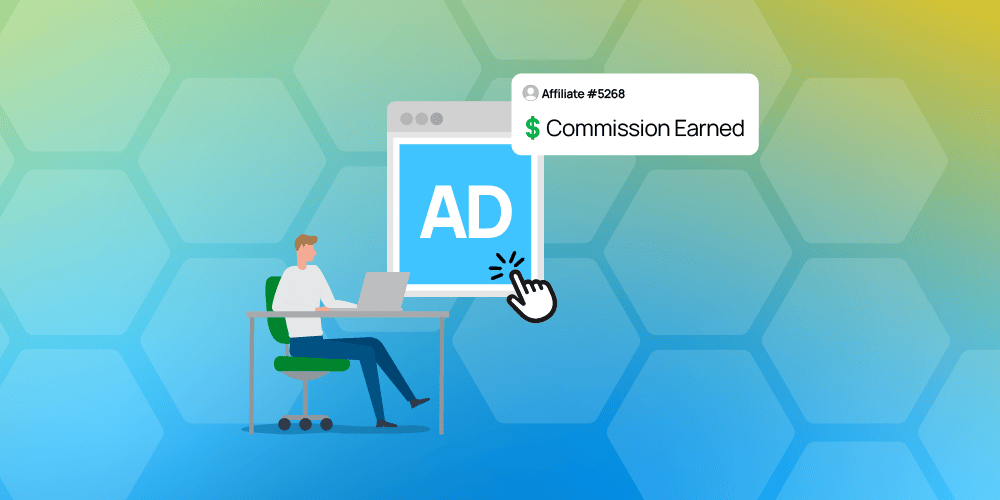Top 5 Best Pay-Per-Click Affiliate Programs for Marketers in 2025

TL;DR: PPC affiliate marketing can boost reach and revenue, but not all programs are equal—and fraud is a major risk. Choose platforms with strong networks, high-quality ads, and real-time fraud protection to make the most of your spend.
Main Points:
- Google AdSense: Large advertiser base, high earnings, strict policies.
- Media.net: Access to Yahoo/Bing network, high revenue, limited reach.
- PropellerAds: Diverse ad formats, global reach, variable ad quality.
- AdThrive: High revenue, premium advertisers, strict application.
- Ezoic: AI-driven optimization, premium advertisers, requires significant traffic.
Marketers are always looking for a way to stay ahead of the competition. Whether it’s a creative campaign or an innovative strategy, there are plenty of ways to capture consumer attention on a budget.
One powerful tool in a marketer's arsenal is pay-per-click (PPC) affiliate marketing. Using an affiliate program can be a great way to extend your reach for tangible results. Choosing the best pay-per-click affiliate program is key to maximizing your ROI.
But what are the best programs? We’re here to tell you our top picks for the year.
What is Pay-Per-Click Affiliate Marketing?
By now, pay-per-click advertising is well-known. This model of digital marketing has advertisers pay a fee each time one of their ads is clicked. It’s great for driving traffic on a budget, but sometimes falls short of reaching the right audiences.
Enter pay-per-click affiliate marketing.
This takes PPC advertising to the next level. Affiliate marketing pay-per-click involves affiliates who use pay-per-click advertising sites and methods to promote products or services for another company. The affiliates are paid a commission for each click that leads to a desired action, such as a sale or sign-up.
Businesses can benefit from increased sales or leads without managing their own PPC campaigns. Plus, affiliate programs often result in a more diversified and extensive audience reach. And since payments are tied to actual performance, such as sales or leads, affiliate programs deliver more tangible results beyond simply clicks.
Best Pay-Per-Click Affiliate Programs for Marketers
Marketers turn to pay-per-click affiliate programs for these partnerships. However, not all pay-per-click sites are created equal.
Let’s take a look at some of the best pay-per-click advertising sites that are driving returns for marketers this year:
1. Google AdSense
Google AdSense remains one of the most popular PPC affiliate programs, and for good reason. It offers a vast network of advertisers and a reliable platform for earning revenue from website traffic.
Pros:
- Large Advertiser Base: With access to millions of advertisers, publishers can display a variety of ads that are relevant to their audience, increasing the chances of engagement.
- High Potential Earnings: Google AdSense is known for offering competitive CPC rates.
- Detailed Analytics and Reporting: The platform provides comprehensive analytics and reporting tools to help track and optimize performance.
Cons:
- Strict Policies and Guidelines: AdSense has rigorous policies surrounding content, ad placement, and click fraud. Non-compliance can lead to account suspension or termination.
- Can Be Competitive and Costly: Popular keywords can be highly competitive, driving up the cost per click for advertisers.
2. Media.net
Media.net is another popular option, powered by the Yahoo Bing Network. This PPC program is known for offering contextual ads that are relevant to the content of a publisher's site. It’s often used alongside AdSense to increase earnings.
Pros:
- Access to Yahoo and Bing’s Network: Leverages the Yahoo and Bing advertiser networks to provide high-quality, contextually relevant ads.
- Increased Revenue: It is widely known that Media.net offers competitive revenue per thousand impressions.
- Responsive Customer Support: Media.net is known for its excellent customer service, providing timely support and assistance to publishers.
Cons:
- Limited Reach: Media.net is often the second choice to AdSense because the latter simply has more users.
3. PropellerAds
This versatile ad network offers various ad formats, making it ideal for publishers looking for alternative monetization methods.
Pros:
- Wide Range of Ad Formats: PropellerAds offers diverse ad formats to cater to different audience preferences.
- Global Reach: The platform has a global presence, allowing advertisers to target users worldwide.
Cons:
- Lower CPM Rates: The cost per thousand impressions (CPM) rates can be lower compared to premium ad networks.
- Quality of Ads Can Vary: Some publishers may find that ad quality can vary.
4. AdThrive
This ad management platform is designed for high-traffic bloggers and content creators, offering premium ad placements and personalized support.
Pros:
- High Revenue Potential: AdThrive is known for maximizing ad revenue through strategic placements and premium advertisers.
- Access to Premium Advertisers: AdThrive partners with high-quality advertisers to ensure relevant and well-paying ads.
Cons:
- Stringent Application Process: AdThrive has a rigorous application process, accepting only publishers with substantial traffic and high-quality content.
- Only Available to High-Traffic Sites: Smaller sites or those with lower traffic may not qualify.
5. Ezoic
Ezoic is quickly becoming a popular pay-per-click affiliate marketing program. It uses machine learning to optimize ad placements and maximize revenue for publishers by testing different ad combinations and placements.
Pros:
- AI-Driven Ad Optimization: Technology continuously tests and optimizes ad placements.
- Access to Premium Advertisers: Ezoic partners with high-quality advertisers to offer competitive CPM rates and high-value ads.
- Comprehensive Analytics and Reporting: The platform provides detailed insights into ad performance, user behavior, and revenue.
Cons:
- Requires Significant Traffic: Ezoic’s optimization works best with substantial traffic data.
- Learning Curve: The platform’s extensive features and optimization options can be overwhelming for new users.

What the Best PPC Sites Have in Common
While platforms like those mentioned above each bring unique strengths to the table, they also share a few core qualities that make them the best PPC advertising sites. Here are a few of the things that make them top choices for publishers and advertisers alike.
- Revenue Potential: All of these platforms are known for offering competitive or high payouts, either through access to premium advertisers (like on AdThrive and Ezoic) or by tapping into large advertiser networks (as with Google AdSense and Media.net).
- Strong Advertiser Networks: These PPC sites connect publishers with well-established advertising partners for a steady flow of monetization opportunities.
- Ad Quality and Relevance: Each network uses advanced algorithms or manual processes to deliver ads that are tailored to user behavior or content context. This enhances both user experience and click-through rates.
- Entry Requirements: Whether it’s strict content policies or rigorous application reviews, these platforms set high standards to maintain quality across their networks.
- Tools for Optimization: The best PPC sites use modern tools and versatile ad formats to help publishers maximize performance and revenue over time.
Risks and Challenges of Pay-Per-Click Sites
Pay-per-click advertising and affiliate marketing programs offer lucrative revenue opportunities. However, with the potential for big rewards also comes significant risks. It’s always important to weigh the potential downsides alongside the rewards before diving in.
Ultimately, the best affiliate marketing pay-per-click program depends on your size and budget. Regardless of the program you choose, remember that no PPC site is perfect. Here are a handful of things to consider:
High Costs in Competitive Niches:- PPC can be costly, especially when targeting competitive keywords. If you're a smaller publisher or marketer, it can be difficult to compete with larger players who can afford to spend more for the same traffic.
- Ad Fatigue and Declining Engagement: Repetitive ads can also cause ad fatigue, which decreases engagement. Keeping creatives fresh and rotating ad formats helps alleviate this issue, but it adds to the ongoing maintenance required to keep campaigns effective.
- Affiliate marketing fraud is a type of online fraud that occurs when someone tries to take advantage of an affiliate marketing program by generating fake leads or claiming sales attribution they didn't contribute towards.
Common forms of affiliate fraud include:
- Click farms simulating engagement.
- Cookie stuffing to falsely earn commission credit.
- Bot traffic that mimics real user behavior but never converts.
When affiliate traffic is fraudulent, it means that a large portion of the advertising budget is being wasted.
By our estimate, approximately 45% of all affiliate traffic is fraudulent. A sophisticated fraud detection and prevention tool such as Anura can help block this type of ad fraud in real-time.
Choose Wisely, Monitor Constantly
No matter which platform or partner you choose, vigilance is key. Monitor performance regularly, watch for suspicious patterns, and invest in tools that protect your ad spend from fraud.
Don't lose by affiliating with fraudsters. Learn more about Anura today and take back control of your PPC strategy.


